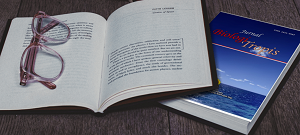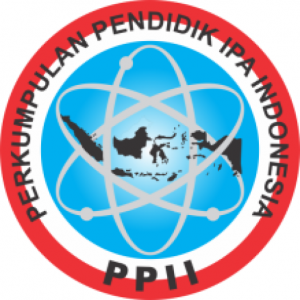Potential of Octopus Ink Extract as Anti-Quorum Sensing to Prevent Aeromonas hydrophila Biofilm in Aquaculture
Authors
Rangga Idris Affandi , Bagus Dwi Hari SetyonoDOI:
10.29303/jbt.v25i1.8438Published:
2025-01-30Issue:
Vol. 25 No. 1 (2025): Januari - MaretKeywords:
Aeromonas hydrophila, anti-quorum sensing, aquaculture, biofilm,octopus ink extract.Articles
Downloads
How to Cite
Downloads
Metrics
Abstract
Aeromonas hydrophila is a pathogenic bacterium that often causes disease in freshwater fish, thus impacting food insecurity and global economic losses. Biofilm formation by A. hydrophila regulated by the quorum sensing (QS) system plays an important role in increasing virulence and resistance to antibiotics. Inhibiting the QS system can be an option to control A. hydrophila infection in fish. One of the ingredients that can be used is octopus ink extract containing alkaloids. This study aims to analyze the potential of octopus ink extract as an anti-quorum sensing agent in preventing the formation of A. hydrophila biofilms in aquaculture. The method used is a systematic literature study by collecting data from scientific articles. The analysis was carried out in depth to evaluate the mechanism of octopus ink extract in inhibiting QS and bacterial biofilms. The results showed that active compounds in octopus ink, such as alkaloids, can inhibit communication between bacterial cells by blocking QS autoinducers. This process suppresses the expression of virulence genes and prevents biofilm formation without affecting bacterial viability, so the risk of antibiotic resistance can be minimized. In conclusion, octopus ink extract has great potential as an anti-quorum sensing agent to support the management of A. hydrophila infection in aquaculture. The use of this extract is not only effective but also environmentally friendly, offering an innovative solution to improve the health of farmed fish and the sustainability of the aquaculture industry. Furthermore, octopus ink extract can be used as an immunostimulant in aquaculture industry.
References
Affandi, R. I., Fadjar, M., & Ekawati, A. W. (2019). Active Compounds on Squid (Loligo sp.) Ink Extract Powder as Immunostimulant Candidate to Against Shrimp Disease. Research Journal of Life Science, 6(3), 150–161. https://doi.org/10.21776/ub.rjls.2019.006.03.1
Affandi, R. I., & Diamahesa, W. A. (2023). Potensi Tanaman Brotowali (Tinospora cordifolia) Sebagai Imunostimulan Pada Ikan. Lemuru: Jurnal Ilmu Perikanan Dan Kelautan, 5(3), 453–463. https://doi.org/10.36526/jl.v5i3.2967
Affandi, R. I., Fadjar, M., Muahiddah, N., & Setyono, B. D. H. (2023). Potensi Tinta Gurita (Octopus Sp.) Sebagai Imunostimulan Pada Udang Vaname (Litopenaeus Vannamei). Ganec Swara, 17(1), 318–325. https://doi.org/10.35327/gara.v17i1.403
Affandi, R. I., & Setyono, B. D. H. (2023). Potensi Tanaman Sambiloto (Andrographis paniculata) Sebagai Imunostimulan Pada Ikan. JURNAL VOKASI ILMU-ILMU PERIKANAN (JVIP), 4(1), 131–141. https://doi.org/10.35726/jvip.v4i1.7109
Affandi, R. I., & Diniariwisan, D. (2024). POTENTIAL USE OF FENNEL (FOENICULUM VULGARE) AS FISH IMMUNOSTIMULANT: ARTICLE REVIEW. Jurnal Perikanan Unram, 14(2), 657–672. https://doi.org/10.29303/jp.v14i2.816
Affandi, R. I., & Setyono, B. D. H. (2024a). Potensi Tanaman Lempuyang (Zingiber zerumbet) Sebagai Imunostimulan Pada Ikan. JURNAL VOKASI ILMU-ILMU PERIKANAN (JVIP), 4(2), 182–193. https://doi.org/10.35726/jvip.v4i2.7246
Affandi, R. I., & Setyono, B. D. H. (2024b). Potensi Tanaman Sambiloto (Andrographis paniculata) Sebagai Imunostimulan Pada Udang. JURNAL VOKASI ILMU-ILMU PERIKANAN (JVIP), 5(1), 09–21. https://doi.org/10.35726/jvip.v5i1.7333
Arya, S., & Usha, R. (2024). Bioprospecting and Exploration of Phytochemicals as Quorum Sensing Inhibitors against Cariogenic Dental Biofilm. Journal of Pure and Applied Microbiology, 18(1), 100–117. https://doi.org/10.22207/JPAM.18.1.10
Cai, W., & Arias, C. R. (2017). Biofilm Formation on Aquaculture Substrates by Selected Bacterial Fish Pathogens. Journal of Aquatic Animal Health, 29(2), 95–104. https://doi.org/10.1080/08997659.2017.1290711
Che, J., Shi, J., Fang, C., Zeng, X., Wu, Z., Du, Q., Tu, M., & Pan, D. (2024). Elimination of Pathogen Biofilms via Postbiotics from Lactic Acid Bacteria: A Promising Method in Food and Biomedicine. Microorganisms, 12(4). https://doi.org/10.3390/microorganisms12040704
Cushnie, T. P. T., Cushnie, B., & Lamb, A. J. (2014). Alkaloids: An overview of their antibacterial, antibiotic-enhancing and antivirulence activities. International Journal of Antimicrobial Agents, 44(5), 377–386. https://doi.org/10.1016/j.ijantimicag.2014.06.001
De Silva, L. A. D. S., & Heo, G. J. (2023). Biofilm formation of pathogenic bacteria isolated from aquatic animals. Archives of Microbiology, 205(1). https://doi.org/10.1007/s00203-022-03332-8
Ghosh, A., Jayaraman, N., & Chatterji, D. (2020). Small-Molecule Inhibition of Bacterial Biofilm. ACS Omega, 5(7), 3108–3115. https://doi.org/10.1021/acsomega.9b03695
Hamdi, S. A. H., El-Shazly, M. A. M., Fol, M. F., Mossalem, H. S., Ghareeb, M. A., Ibrahim, A. M., Aloufi, A. ., El-Ghany, M. N. A., & Korany, S. M. (2024). Octopus vulgaris ink chemical profiling and validation of its potential as antioxidant, antimicrobial, anti-cancer as well as anti-Schistosomal drug in vitro. Arquivo Brasileiro de Medicina Veterinária e Zootecnia, 76(5), 1–11. https://doi.org/10.1590/1678-4162-13217
Kang, X., Yang, X., He, Y., Guo, C., Li, Y., Ji, H., Qin, Y., & Wu, L. (2023). Strategies and materials for the prevention and treatment of biofilms. Materials Today Bio, 23(June). https://doi.org/10.1016/j.mtbio.2023.100827
Kar, J., Ramrao, D. P., Zomuansangi, R., Lalbiaktluangi, C., Singh, S. M., Joshi, N. C., Kumar, A., Kaushalendra, Mehta, S., Yadav, M. K., & Singh, P. K. (2022). Revisiting the role of cyanobacteria-derived metabolites as antimicrobial agent: A 21st century perspective. Frontiers in Microbiology, 13(November), 1–12. https://doi.org/10.3389/fmicb.2022.1034471
Kumar, A., & Pasha, Y. (2020). Isolation and Characterization of Microorganisms From Squid Loligoduvauceliand Generation of Microbe Free Crude Ink. International Journal of Pharmaceutical, Chemical & Biological Sciences, 10(3), 80–87.
Markowska, K., Szymanek-Majchrzak, K., Pituch, H., & Majewska, A. (2024). Understanding Quorum-Sensing and Biofilm Forming in Anaerobic Bacterial Communities. International Journal of Molecular Sciences, 25(23). https://doi.org/10.3390/ijms252312808
Mishra, R., Panda, A. K., De Mandal, S., Shakeel, M., Bisht, S. S., & Khan, J. (2020). Natural Anti-biofilm Agents: Strategies to Control Biofilm-Forming Pathogens. Frontiers in Microbiology, 11(October). https://doi.org/10.3389/fmicb.2020.566325
Munir, S., Shah, A. A., Shahid, M., Manzoor, I., Aslam, B., Rasool, M. H., Saeed, M., Ayaz, S., & Khurshid, M. (2020). Quorum Sensing Interfering Strategies and Their Implications in the Management of Biofilm-Associated Bacterial Infections. Brazilian Archives of Biology and Technology, 63. https://doi.org/10.1590/1678-4324-2020190555
Mzula, A., Wambura, P. N., Mdegela, R. H., & Shirima, G. M. (2019). Current State of Modern Biotechnological-Based Aeromonas hydrophila Vaccines for Aquaculture: A Systematic Review. BioMed Research International, 2019, 1–11. https://doi.org/10.1155/2019/3768948
Neil, B., Cheney, G. L., Rosenzweig, J. A., Sha, J., & Chopra, A. K. (2024). Antimicrobial resistance in aeromonads and new therapies targeting quorum sensing. Applied Microbiology and Biotechnology, 108(1), 205. https://doi.org/10.1007/s00253-024-13055-z
Pangastuti, A., Sari, S. L. A., Budiharjo, A., Fitri, S. T., Sayekti, P., & Putri, S. R. (2021). Screening of some indonesian medicinal plant extracts for anti quorum sensing activity to prevent aeromonas hydrophila infection in oreochromis niloticus. Biodiversitas, 22(8), 3517–3522. https://doi.org/10.13057/biodiv/d220851
Samreen, Qais, F. A., & Ahmad, I. (2022). Anti-quorum sensing and biofilm inhibitory effect of some medicinal plants against gram-negative bacterial pathogens: in vitro and in silico investigations. Heliyon, 8(10), e11113. https://doi.org/10.1016/j.heliyon.2022.e11113
Samrot, A. V., Mohamed, A. A., Faradjeva, E., Jie, L. S., Sze, C. H., Arif, A., Sean, T. C., Michael, E. N., Mun, C. Y., Qi, N. X., Mok, P. L., & Kumar, S. S. (2021). Mechanisms and impact of biofilms and targeting of biofilms using bioactive compounds—a review. Medicina (Lithuania), 57(8), 1–28. https://doi.org/10.3390/medicina57080839
Saputra, M. A., Scabra, A. R., & Affandi, R. I. (2025). Effectiveness of Octopus (Octopus sp.) Ink Exctract on the Growth of Catfish (Clarias sp.) Infected with Aeromonas hydrophila. Journal of Fish Health, 5(1), 1–14. https://doi.org/10.29303/jfh.v5i1.6102
Semwal, A., Kumar, A., & Kumar, N. (2023). A review on pathogenicity of Aeromonas hydrophila and their mitigation through medicinal herbs in aquaculture. Heliyon, 9(3), e14088. https://doi.org/10.1016/j.heliyon.2023.e14088
Sharma, S., Mohler, J., Mahajan, S. D., Schwartz, S. A., Bruggemann, L., & Aalinkeel, R. (2023). Microbial Biofilm: A Review on Formation, Infection, Antibiotic Resistance, Control Measures, and Innovative Treatment. Microorganisms, 11(6), 1614. https://doi.org/10.3390/microorganisms11061614
Sheikh, H. I., Nordin, B., Paharuddin, N., Liew, H. J., Fadhlina, A., Abdulrazzak, L. A., Jalal, K. C. A., & Musa, N. (2023). Virulence factors and mechanisms of Aeromonas hydrophila infection in catfish Siluriformes: a review and bibliometric analysis. Desalination and Water Treatment, 315, 538–547. https://doi.org/10.5004/dwt.2023.30019
Srinivasan, R., Santhakumari, S., Poonguzhali, P., Geetha, M., Dyavaiah, M., & Xiangmin, L. (2021). Bacterial Biofilm Inhibition: A Focused Review on Recent Therapeutic Strategies for Combating the Biofilm Mediated Infections. Frontiers in Microbiology, 12(May), 1–19. https://doi.org/10.3389/fmicb.2021.676458
Ta, C. A. K., & Arnason, J. T. (2016). Mini review of phytochemicals and plant taxa with activity as microbial biofilm and quorum sensing inhibitors. Molecules, 21(1). https://doi.org/10.3390/molecules21010029
Talagrand-Reboul, E., Jumas-Bilak, E., & Lamy, B. (2017). The social life of Aeromonas through biofilm and quorum sensing systems. Frontiers in Microbiology, 8(JAN). https://doi.org/10.3389/fmicb.2017.00037
Vetrivel, A., Ramasamy, M., Vetrivel, P., Natchimuthu, S., Arunachalam, S., Kim, G.-S., & Murugesan, R. (2021). Pseudomonas aeruginosa Biofilm Formation and Its Control. Biologics, 1(3), 312–336. https://doi.org/10.3390/biologics1030019
Zhang, M., Han, W., Gu, J., Qiu, C., Jiang, Q., Dong, J., Lei, L., & Li, F. (2022). Recent advances on the regulation of bacterial biofilm formation by herbal medicines. Frontiers in Microbiology, 13. https://doi.org/10.3389/fmicb.2022.1039297
Zhao, J., Chen, M., Quan, C. S., & Fan, S. D. (2014). Mechanisms of quorum sensing and strategies for quorum sensing disruption in aquaculture pathogens. Journal of Fish Diseases, 38(9), 771–786. https://doi.org/10.1111/jfd.12299
License
Copyright (c) 2025 Rangga Idris Affandi, Bagus Dwi Hari Setyono

This work is licensed under a Creative Commons Attribution 4.0 International License.

Jurnal Biologi Tropis is licensed under a Creative Commons Attribution 4.0 International License.
The copyright of the received article shall be assigned to the author as the owner of the paper. The intended copyright includes the right to publish the article in various forms (including reprints). The journal maintains the publishing rights to the published articles.
Authors are permitted to disseminate published articles by sharing the link/DOI of the article at the journal. Authors are allowed to use their articles for any legal purposes deemed necessary without written permission from the journal with an acknowledgment of initial publication to this journal.


























